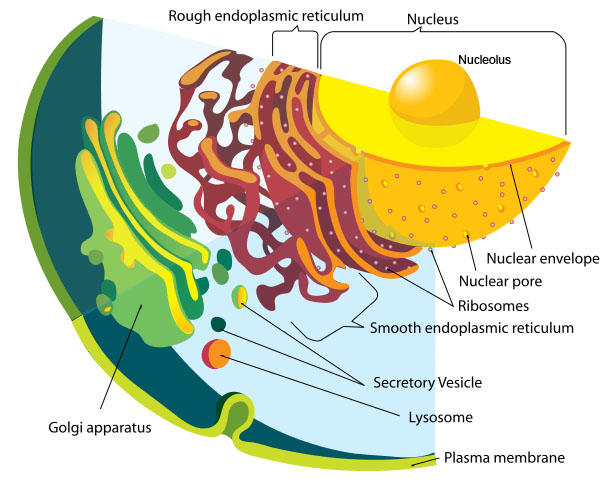1.4: El núcleo
- Page ID
- 52671
El núcleo es el centro de control de la célula y suele ser el orgánulo más grande de la célula. Contiene aproximadamente 20% de ácido ribonucleico (ARN) y 20% de ácido desoxirribonucleico (ADN). Tiene cuatro partes: envoltura nuclear (membrana), nucleoplasma, nucleolo y cromosomas o cromatina.
La envoltura nuclear es una membrana doble que rodea el núcleo. Contiene poros que permiten una rápida comunicación entre el citoplasma de la célula y el nucleoplasma.
El nucleoplasma es similar al citoplasma de la célula pero contiene más macromoléculas proteicas y aparece más oscuro que el citoplasma.
El nucleolo es un cuerpo aproximadamente esférico que consiste en una masa de hilos finos y partículas de ARN, proteínas y ADN. Su papel principal es la síntesis de ARN ribosómico.



